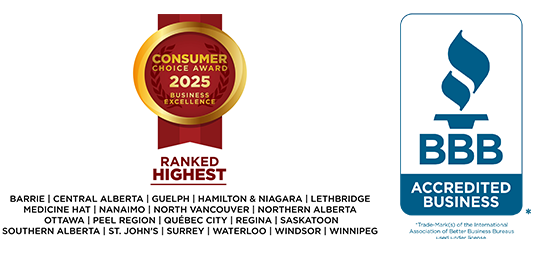Often, people focused on solving debt problems through a Consumer Proposal or Bankruptcy may not recognize the impact these processes can have on their personal income taxes. Ultimately, questions arise: Do I still get tax refunds? What about quarterly credits like GST and the Canada Carbon Rebate? Do I have to pay the tax owing on the return I file for the year I start my Bankruptcy or proposal? Will it affect my spouse, and their refunds and credits?
Bankruptcy
When you file a Bankruptcy, the Income Tax Act (ITA) and the Bankruptcy and Insolvency Act (BIA) set out specific rules for filing tax returns, as well as identify who receives refunds and certain credits. According to Section 128(2)(d) of the ITA, a Bankruptcy filing splits the year of Bankruptcy into two parts: the pre-Bankruptcy period, from January 1 to the day before the day the Bankruptcy was filed, and the post-Bankruptcy period, from the day on which the Bankruptcy was filed to December 31. A tax return must be filed for both pre- and post-Bankruptcy periods.
A Licensed Insolvency Trustee (LIT or Trustee) is obliged by the BIA (Section 22) to ensure the return for the year preceding the Bankruptcy is filed, as well as the pre-Bankruptcy tax return. However, the Trustee often prepares and files the post-Bankruptcy return as well.
A person in Bankruptcy is protected from having to pay personal income tax debt owing on the pre-Bankruptcy return, or on any prior year tax return. However, the Canada Revenue Agency (CRA or Revenue Canada) will offset any refunds generated on the pre-Bankruptcy return or any prior year tax return against tax debt owed by the Bankrupt person.
If there is nothing owing to CRA, then, per BIA 67(1)(c), any tax refund generated by the pre- or post-Bankruptcy return, or any prior tax return, is sent to the Trustee for the Bankrupt person’s creditors. Tax refund has been interpreted to include Canada Carbon Rebate payments. Any GST credits may be sent to the Trustee until a threshold is reached, after which the Trustee will advise CRA to resume sending them to the Bankrupt person. Canada Child Benefit (CCB) is unaffected by Bankruptcy, as are some provincial tax credits, such as Ontario’s Trillium credit.
Somewhat counterintuitively, while a refund on the post-Bankruptcy tax return will be sent to the Trustee, if the Bankrupt person owes tax on this return, they must pay it, as it is considered a new tax debt.
In general, one spouse filing Bankruptcy does not have a tax effect on the non-bankrupt spouse. The split year does not apply to a non-bankrupt spouse, and they will receive any refunds or credits they are entitled too. However, the Trustee will not file the non-bankrupt’s spouse’s tax return(s). The non-bankrupt spouse is responsible for the preparation and filing of their own return(s), although the Trustee and non-bankrupt spouse will share any information needed to complete both tax returns.
Another often-overlooked impact of Bankruptcy is the cancellation of many losses or expense carryforwards, rendering them unavailable to be claimed in future tax years.
Given the foregoing, the impact of a Bankruptcy on a person’s tax return filings, refunds, or credits is significant, and may be a factor in deciding to file a Consumer Proposal instead of Bankruptcy.
Consumer Proposal
Consumer Proposals result in less tax complexity. Unlike in Bankruptcy, when a person files a Consumer Proposal, they don’t give up ownership rights in current or future assets. As such, they will receive all tax refunds and credits to which they are entitled; none are sent to the Trustee. For those who tend to receive larger tax refunds and credits, this may make the Consumer Proposal the better debt-relief option.
The ITA is largely silent on the treatment of tax returns in Consumer Proposals. Even though a proposal may occur partway through the year, there is no requirement to file a pre-proposal and post-proposal tax return. A regular full-year tax return is all that is required. This creates some ambiguity for those who expect to owe tax in the year they file their proposal.
The CRA has taken differing approaches over time to the inclusion of pre-proposal (January 1 to the day before the proposal) tax debt, which is usually unknown at the time the proposal is filed. Some proposals will make no allowance for pre-proposal tax debt, and it is a non-issue. In cases where the proposal wording aims to include pre-proposal tax debt, CRA has often required debtors to provide a provisional tax return at the time the proposal is filed — this is a draft return showing an estimate of the tax debt owing up to the date the proposal is filed. Later, once the full-year tax return is assessed, CRA will allow the person to deduct the estimated amount of tax owing on the provisional return from the total tax owing for the year. Ultimately, the person would only have to pay the post-proposal portion.
Recently, CRA has shown a willingness to pro-rate the full-year tax debt based on the date in the year the proposal was filed, without the need for a provisional return. This approach is arguably fairer, as some tax credits cannot be anticipated or accurately calculated until year-end.
Prior year tax debt, if substantial, can make it more difficult to get an in-favour vote from CRA on the proposal, particularly if they are the majority creditor. This would mean rejection of the proposal. The CRA would require the person to have up-to-date tax returns and may require additional proposal clauses mandating timely instalment remittances, return filings, and balance payments for the duration of the proposal.
In summary, it’s important to understand the impact of filing a Consumer Proposal or Bankruptcy on your tax filing requirements, refunds, and credits. MNP’s Licensed Insolvency Trustees can assist you in understanding your options and obligations.
Contact us for a free, no obligation, confidential consultation to discuss your unique circumstances and find a life-changing debt solution that best fits your needs.



